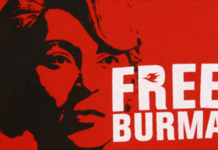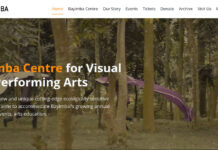by Sofia Silei
In 1994, a remarkable story began in Cambodia, a country emerging from the shadows of a brutal past. Nine Cambodian refugees, who had spent years in exile in a Thai border camp during the Khmer Rouge regime, returned to their homeland with a mission. United by their shared experiences and the teachings of a French volunteer, Veronique Decrop, these nine friends founded the Phare Ponleu Selpak association in Battambang. The name, which means “Brightness of Art,” encapsulates their vision: to use the arts as a therapeutic tool to help traumatized and disadvantaged children rebuild their lives.
The Khmer Rouge regime, which ruled Cambodia from 1975 to 1979, left deep scars on the country, particularly on its cultural and artistic heritage. During this period, all forms of art and culture were banned, and many artists were persecuted or killed. When the regime fell, the country faced the daunting task of not only rebuilding its infrastructure but also reviving its cultural identity. The creation of Phare Ponleu Selpak was a crucial step in this revival.
The association began by offering classes in music, dance, painting, and theatre, providing a creative outlet for children who had endured immense suffering. Over the years, Phare Ponleu Selpak grew into a significant educational and artistic centre, offering both artistic training and academic education. Its influence extended beyond Battambang, leading to the creation of Phare, The Cambodian Circus in Siem Reap.
Phare, The Cambodian Circus, has become one of the most renowned circuses in the world, celebrated for its unique blend of traditional Cambodian circus arts with modern performance techniques. Unlike Western circuses, the roots of circus arts in Cambodia stretch back centuries. Ancient carvings on temples like Angkor Wat and Bayon depict scenes of acrobats, contortionists, jugglers, and dancers, highlighting the deep cultural connection Cambodians have with these art forms.
However, the history of circus arts in Cambodia is also marked by periods of disappearance, especially during times of conflict. After the fall of Angkor in 1353, there are no records of circus performances until King Norodom Sihanouk revived the tradition in the 1960s. Sadly, this revival was short-lived, as the Khmer Rouge once again outlawed all forms of art. It wasn’t until after the Vietnamese occupation ended in 1979 that the National Circus School of Cambodia was established in Phnom Penh, laying the groundwork for the rebirth of circus arts in the country.
Phare, The Cambodian Circus, which started as a small endeavour, has grown into a major cultural phenomenon. Since its establishment in Siem Reap in 2013, it has become a top-rated entertainment venue, attracting both locals and tourists. The circus is known for its high-energy performances, which combine traditional Cambodian circus skills with modern dance, theatre, and storytelling. Audiences are captivated by the skill and artistry of the performers-trapeze artists, jugglers, contortionists, fire-eaters, musicians, and dancers—who bring their stories to life on stage.
What makes Phare truly unique is its commitment to social change. The stories told through the circus are often based on the real-life experiences of the performers, many of whom come from disadvantaged backgrounds. The revenue generated by the circus helps to fund Phare Ponleu Selpak’s programs, which provide free artistic and academic education, as well as social support services, to over 1,200 at-risk youth in Cambodia every day. Through their art, these young people find a path to healing and hope, transforming their lives and those of their communities.
Phare, The Cambodian Circus, is not just a showcase of extraordinary talent; it is a powerful example of how art can be a force for good, capable of transforming lives and reviving cultural heritage. As Cambodia continues to recover from its dark past, Phare stands as a beacon of hope, daringly modern yet deeply rooted in the country’s rich cultural traditions. For those who experience a Phare performance, it is more than just entertainment, it is a journey through the heart and soul of Cambodia, a testament to the resilience of the human spirit and the transformative power of art.
On the cover photo, sign next to cells used as torture chambers in the former Tuol Sleng S-21 prison and interrogation center of the Khmer Rouge regime, which is now a museum @Nelson Antoine/Shutterstock.com
























